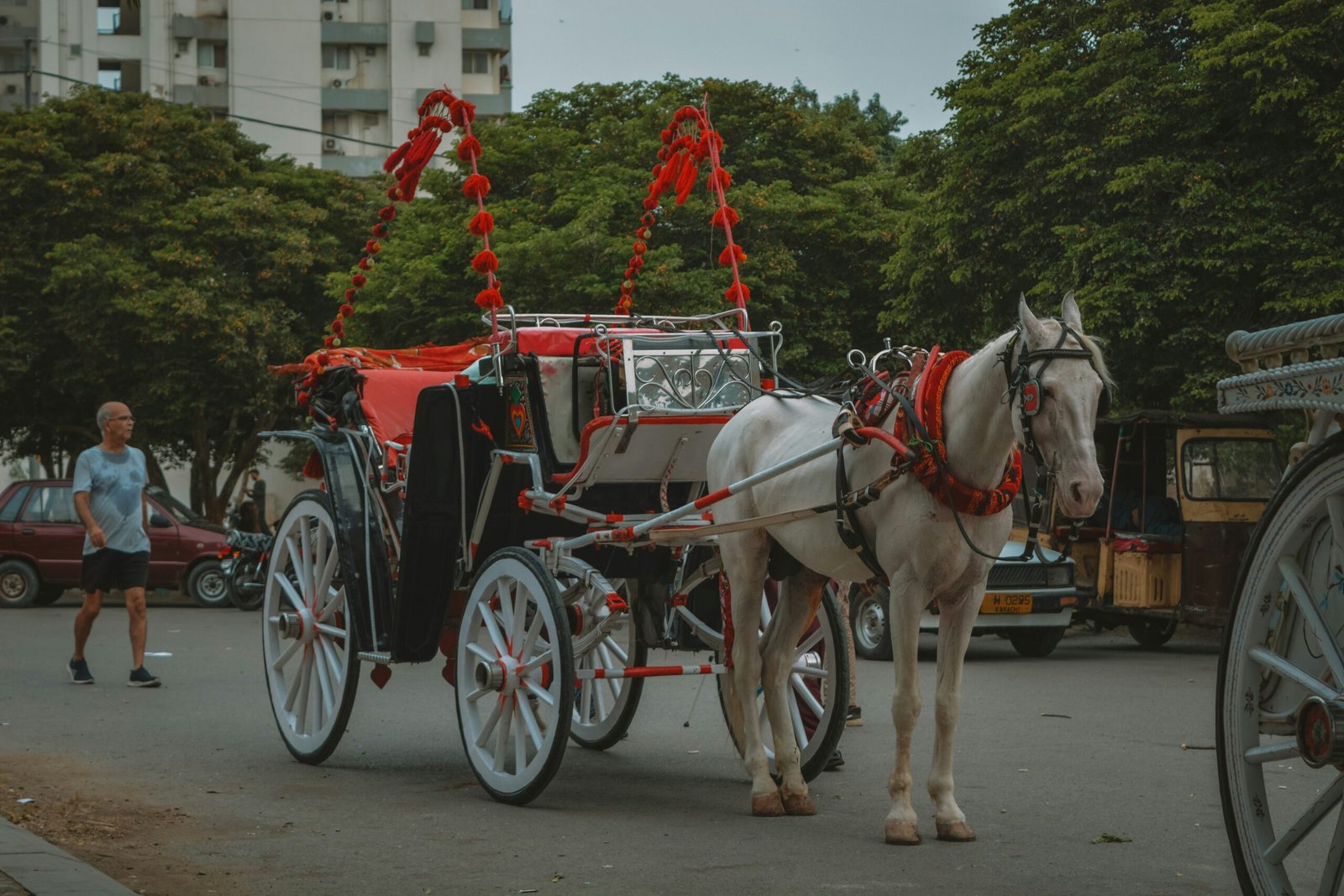Tripura
Temples, Palaces, and Tribal Traditions
HIGHLIGHT
From the grandeur of the Ujjayanta Palace to the peaceful charm of Neermahal, Tripura is a treasure trove of history, culture, and natural beauty waiting to be explored.
Tripura
A Journey Through Palatial History and Natural Splendor
Tripura, known for its royal heritage and ancient temples, offers travelers a serene escape with its palaces, wildlife sanctuaries, and tribal culture in India’s unexplored northeast.
Tripura, nestled in the northeastern region of India, is a state rich in history, culture, and natural beauty. Known for its stunning royal palaces, ancient temples, and vibrant tribal heritage, Tripura offers a unique blend of historical charm and serene landscapes. The capital city of Agartala is home to grand architectural marvels like the Ujjayanta Palace, while the lush forests, peaceful lakes, and diverse wildlife of Tripura’s countryside provide a tranquil retreat. Whether you’re exploring the ancient Unakoti rock carvings, visiting the majestic Neermahal Palace, or immersing yourself in the local tribal culture, Tripura promises an enriching and offbeat travel experience.
Tripura
The history of Tripura is deeply intertwined with the Manikya Dynasty, which ruled the region for centuries. The state has a rich royal heritage, with its kings tracing their lineage back to the Chandra Dynasty. Tripura’s history also includes a significant tribal influence, with indigenous tribes like the Tripuri, Reang, and Chakma contributing to the state’s cultural fabric. During British rule, Tripura remained a princely state, and after India’s independence, it became a Union Territory before attaining full statehood in 1972. Tripura’s historical landmarks, like the Ujjayanta Palace and the ancient Unakoti rock carvings, reflect its royal and tribal heritage, making it a culturally diverse and historically rich region.
Places of Interest
Ujjayanta Palace (Agartala):
Built by Maharaja Radha Kishore Manikya in the early 20th century, the Ujjayanta Palace is a grand royal palace located in the heart of Agartala. The palace, now a museum, showcases Tripura’s royal heritage, architecture, and cultural exhibits, providing visitors with a glimpse into the state’s history.Neermahal (Lake Palace):
Located on Rudrasagar Lake, Neermahal is a stunning water palace built by Maharaja Bir Bikram Kishore Manikya in the 1930s. The palace, a beautiful blend of Mughal and Hindu architectural styles, is Tripura’s very own “lake palace” and offers boat rides, scenic views, and cultural events like the Neermahal Water Festival.Unakoti (Rock Carvings):
Unakoti, meaning “one less than a crore” (99,99,999), is an ancient site featuring massive rock-cut carvings and sculptures dating back to the 7th-9th century. The site is dedicated to Lord Shiva and is a significant pilgrimage spot as well as an archaeological treasure, with intricate carvings of Hindu deities etched into the hillsides.Tripura Sundari Temple (Matabari):
One of the 51 Shakti Peethas, the Tripura Sundari Temple, located in Udaipur, is a revered Hindu pilgrimage site. The temple is dedicated to Goddess Kali, locally known as Tripureshwari, and is believed to be more than 500 years old. It is a major spiritual attraction for devotees and tourists alike.Sepahijala Wildlife Sanctuary:
Sepahijala Wildlife Sanctuary is home to diverse flora and fauna, including the spectacled monkey (Phayre’s leaf monkey), which is unique to the region. The sanctuary also features a botanical garden, a zoo, and beautiful lakes, making it a popular destination for wildlife enthusiasts and nature lovers.Jampui Hills:
Known for its scenic beauty and pleasant climate, Jampui Hills is a perfect getaway for nature lovers. The hills are famous for their lush green tea gardens, panoramic views, and the annual Orange Festival, which celebrates the local orange harvest. Visitors can enjoy trekking, birdwatching, and exploring traditional tribal villages.Chabimura (Rock Carvings):
Located along the banks of the Gomati River, Chabimura is famous for its rock carvings of Hindu deities, including Goddess Durga and Lord Vishnu. The carvings date back to the 15th century and can be reached by boat, offering a unique cultural and scenic experience.Udaipur (The Lake City of Tripura):
Udaipur, also known as the “city of lakes,” is home to several beautiful lakes and temples. The Kalyan Sagar Lake near the Tripura Sundari Temple is a popular spot for devotees and tourists alike. The town’s tranquil atmosphere and picturesque lakes make it an ideal destination for relaxation and spiritual exploration.Pilak (Ancient Sculptures and Ruins):
Pilak is an archaeological site known for its ancient sculptures and ruins, reflecting a blend of Hindu and Buddhist influences. The site features terracotta plaques, stone images, and sculptures dating back to the 8th-9th centuries, making it a fascinating destination for history buffs and archaeologists.
Culture and Festivals
Tripura’s culture is a vibrant blend of tribal traditions, royal heritage, and religious practices. The state’s festivals are a colorful reflection of its rich cultural diversity, offering visitors a chance to witness its unique customs, music, and dance.
Kharchi Puja:
Kharchi Puja is one of the most important festivals in Tripura, celebrated in July in honor of the 14 deities of the Tripura royal family. The festival takes place at the Chaturdasha Temple in Agartala and includes rituals, cultural performances, and traditional music, drawing devotees and tourists alike.Garia Puja (Tribal Festival):
Garia Puja is a significant tribal festival celebrated in April to honor Lord Garia, the deity of wealth and prosperity. The festival involves animal sacrifices, dances, and music performed by various tribal communities, showcasing Tripura’s vibrant tribal culture.Durga Puja:
Like the rest of Bengal, Durga Puja is celebrated with great fervor in Tripura, especially in the capital, Agartala. The festival features elaborate pandals, idols of Goddess Durga, cultural performances, and processions, offering a unique insight into the state’s religious and cultural life.Neermahal Water Festival:
Held in the Rudrasagar Lake, the Neermahal Water Festival is a cultural and sporting event that celebrates the state’s unique water palace. The festival includes boat races, cultural performances, and local food, attracting both locals and tourists to the scenic palace grounds.Orange Festival (Jampui Hills):
Celebrated annually in the picturesque Jampui Hills, the Orange Festival celebrates the local orange harvest with cultural programs, folk dances, and traditional music. Visitors can enjoy scenic treks, explore the hill’s tea gardens, and participate in the festivities.
What's the weather like?
When to visit Tripura
The best time to visit Tripura is during the winter months, from October to March, when the weather is cool and pleasant for sightseeing, trekking, and outdoor activities. The monsoon season (June to September) brings heavy rainfall, while summers (April to June) can be hot and humid.
10
°C
60
MM
15
°C
80
MM
Spring
March to May
Summer
June to August
10
°C
100
MM
4
°C
90
MM
Autumn
September to November
Winter
December to February
Spring
March to May
Summer
June to August
Autumn
September to November
Winter
December to February
Example Trips
Book Your Tour
Browse our example trips and get in contact to start planning your very own adventure.
Escape the Ordinary
Our Stories
"Memories of a Lifetime"
Thanks to Hidden Journeys, we discovered parts of India we didn’t even know existed. Their knowledge of local culture and hidden gems made this the trip of a lifetime. Can’t wait for our next adventure with them!

Lita from Japan
"Tailored Perfection!"
Our travel agent listened attentively to our preferences and crafted a bespoke itinerary that exceeded our wildest dreams. From securing coveted reservations to arranging private tours, they went above and beyond to ensure our satisfaction. Thanks to their dedication and expertise, we enjoyed a seamless and truly unforgettable journey. We can't wait to plan our next adventure with them!

flombergdeb from USA
CEOApple"A Dream Destination Wedding Come True"
Hidden Journeys planned our destination wedding in Rajasthan, and it was beyond magical. From the intricately planned ceremonies to the breathtaking venues, everything was flawless. Our guests still rave about the experience!

Mercel
Travel Safely with Hidden Journeys
Proudly Recognized by the Ministry of Tourism
At Hidden Journeys, your safety and memorable travel experiences are our top priorities. Proudly recognized by the Ministry of Tourism and affiliated with esteemed organizations such as ADTOI (Association of Domestic Tour Operators of India) and IOTA (Indian Outbound Travel Association), we ensure that every journey is crafted to the highest standards of quality and trust. With over 20 years of expertise in curating authentic, immersive travel experiences across India, we’re here to show you the unseen side of India with the utmost care and dedication. Travel with confidence and explore India like never before – only with Hidden Journeys.

As Seen In






Your Bespoke & Luxury Travel partner. Discover unseen of India.


